On 17 and 18 October 2024 the CropXR community gathered to participate in the first CropXR Conference. The purpose of this scientific conference was to focus on the state of the CropXR research. The first outcomes of this research were discussed. Moreover, the various work packages and partners exchanged information to cross-pollinate each other’s work. A rich program offered keynote speeches, (poster) presentations, workshops, and extensive opportunities for social interaction.
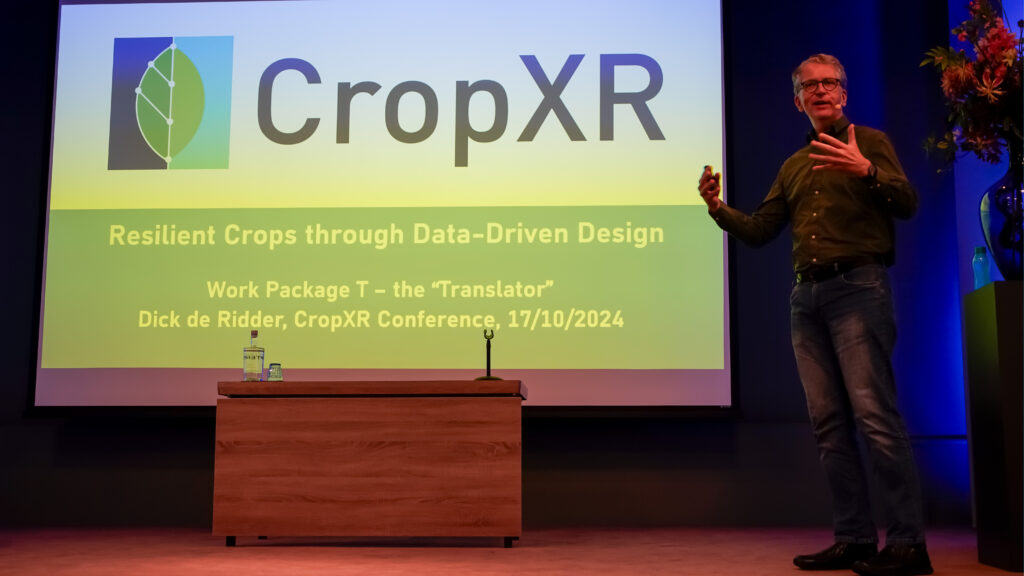
CropXR ‘Rocks’
The first day of the conference commenced with an introduction by the Board of Directors: Guido van den Ackerveken (Scientific Director), Hedwich Teunissen (Managing Director) and Auke Damstra (Technology Director). CropXR has an ambitious mission: “In 2033, we have developed resilient crops through data-driven design.” To realize this long-term goal, it is necessary to formulate what will be achieved annually. Moreover, by defining quarterly goals, or so-called ‘Rocks’, CropXR specifies short-term goals.
A rock that is thrown in the water causes ripples. Similarly, the CropXR ‘Rocks’ will have a positive ripple effect on the entire organization. They will accelerate certain developments that contribute to achieving the mission on time. The next three months, CropXR will realize four ‘Rocks’: ‘Digital Connection’, ‘Meta Buddy’, ‘CropEXposed’ and ‘Tropical Caulipower’. What do these ‘Rocks’ entail?
The ‘Digital Connection’ will bring together all the people in the consortium that work on modelling. There is a modelling component in every work package. In many cases, different groups and people are involved. This ‘Rock’ aims to strengthen the modelling collaborations. All the people involved need to get to know each other better and exchange knowledge.
‘Meta Buddy’ is a pilot to develop a virtual assistant based on AI. This ‘buddy’ will interview researchers on the metadata of big data sets they want to upload in the Resilience hub. This tool will make it easier and more pleasant for scientist to provide this kind of data. Moreover, it will help to improve the quality and standardization of the metadata.
With ‘CropEXposed’ we will take the first steps to improve the content of the CropXR website. Currently, information on certain work packages and activities is lacking. The community will provide web texts to describe their work and their teams. In the long-term, the website will be completely revamped with the assistance of an external web agency to improve its look-and-feel.
‘Tropical Caulipower’ is related to the Cauliflower Flagship of CropXR. In the coming three months, the project proposal will be drafted. In addition, we will work on strengthening the commitment of the partners within the consortium to deploy this approach.
After this introduction, the program continued with a keynote lecture by Klaas Vandepoele, Full Professor at Ghent University and group leader in the VIB-UGent Center for Plant Systems Biology. In his lecture, Vandepoele talked about cis-regulatory elements that are critical to study the transcriptional regulation of genes controlling key traits that govern plant growth and development. Vandepoele explained his state-of-the-art research, challenging the audience with complex information on plant genes.
The morning program also included insightful presentations on the work package Demonstrator or C1 by Professor Kirsten ten Tusscher, on the Translator or work package T by Professor Dick de Ridder and Young CropXR by PhD candidates Aisha So and Thijs van Loo who are part of this network of young professionals within CropXR.
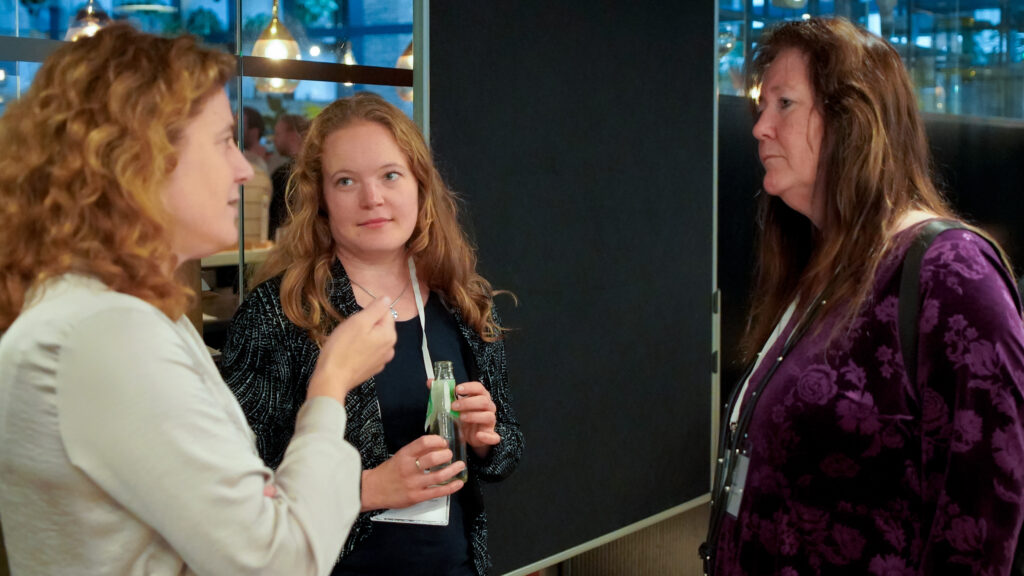

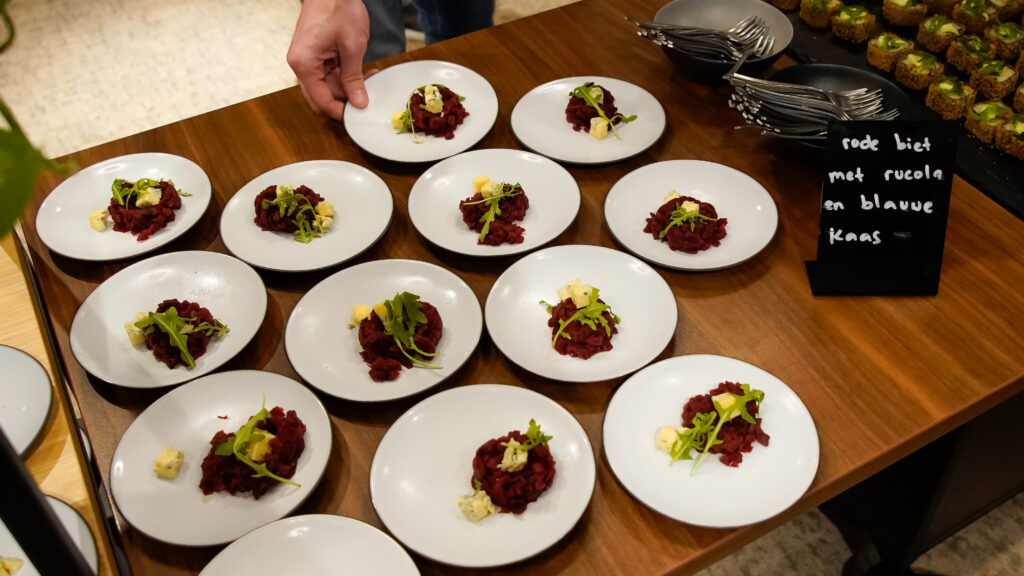
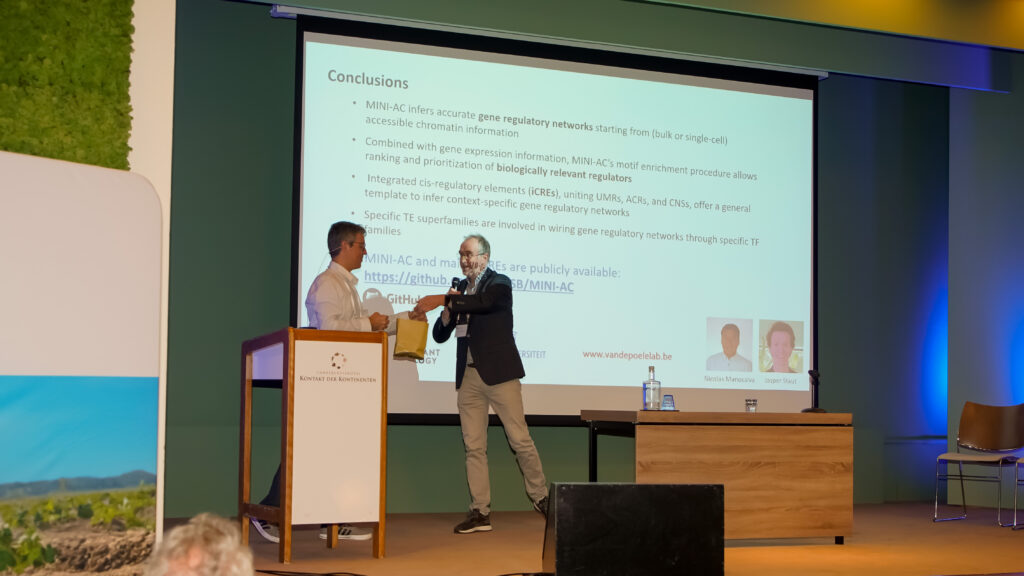
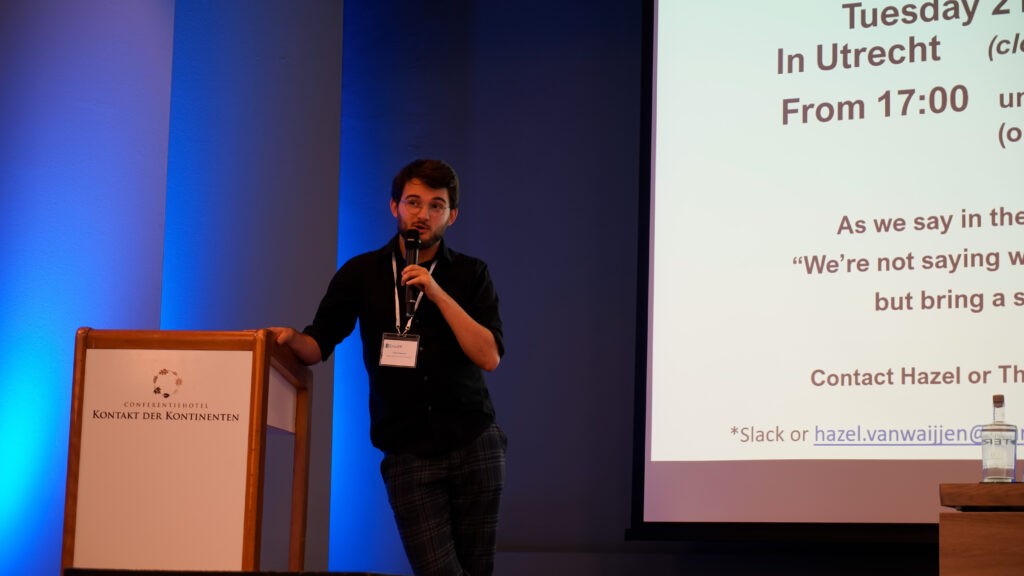
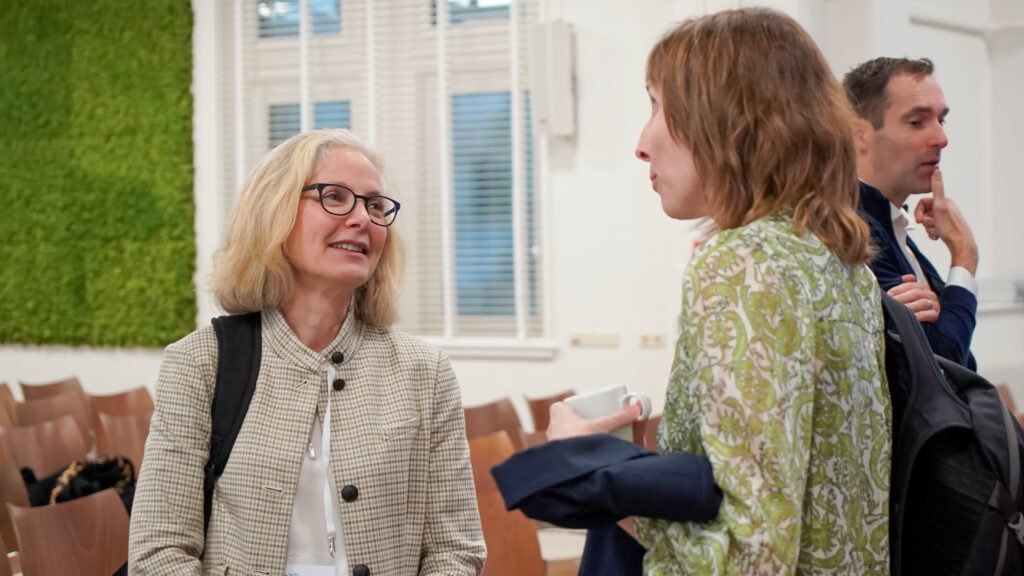

Workshops and (poster) presentations
What is happening within the various work packages? How can we learn from each other and make progress? To inform and engage the participants, the afternoon workshops offered plenty of opportunity to learn and discuss key topics. A workshop on CropXR Education touched on the question of how to transfer knowledge to a new generation of breeders, researchers and policymakers. A workshop on plant resilience for non-biologists stirred discussions on how to define resilience. Lastly, a workshop on modelling introduced non-experts to the differences between machine learning and mechanistic models. The outcomes of the workshops were discussed on the main stage.
Professor Koen Beumer then gave a thought-provoking lecture on the dynamics of innovations and what kind of societal impact they can have. The day was concluded with lively conversations during the poster presentations of the PhD candidates, followed by a delicious dinner.
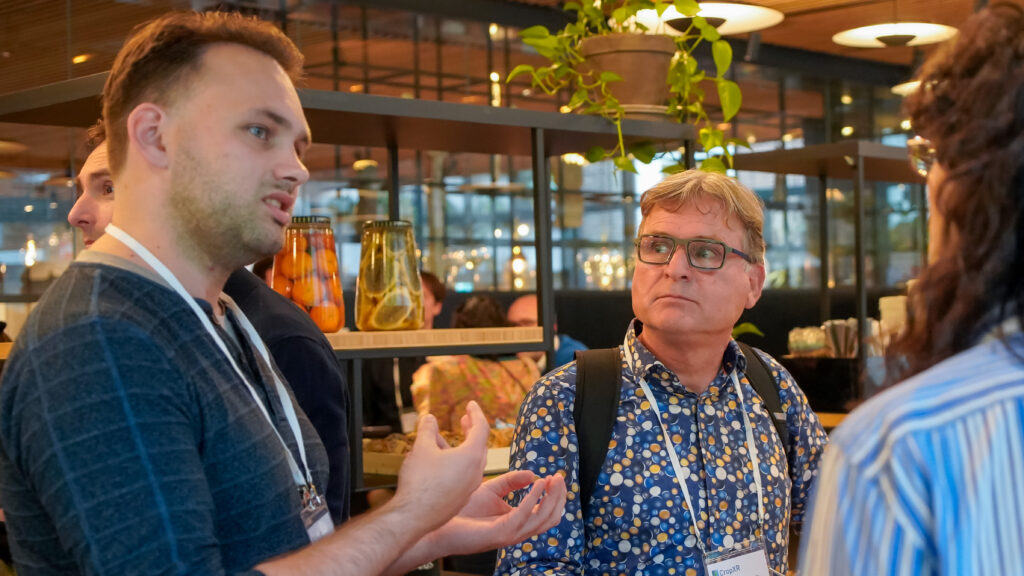

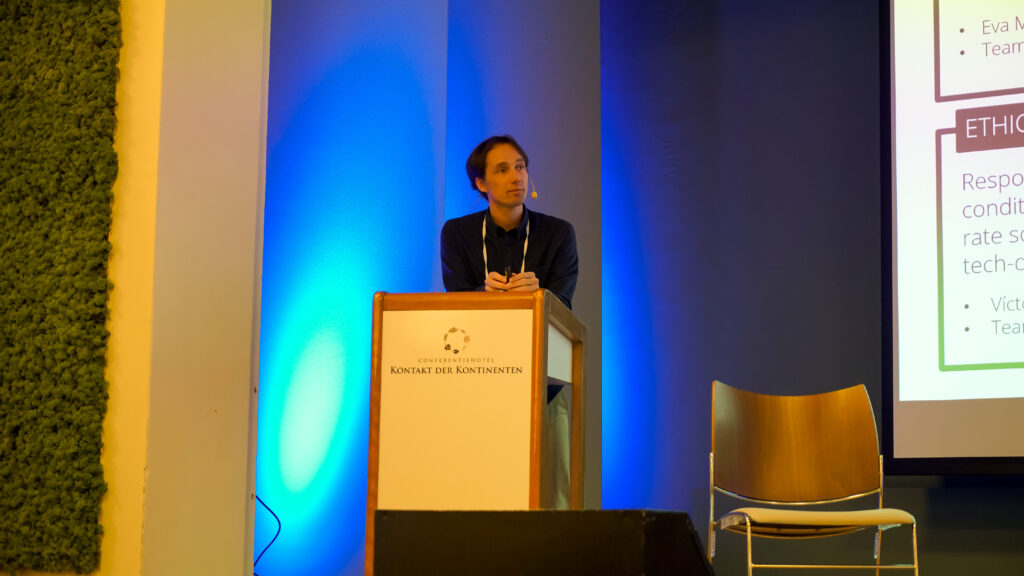
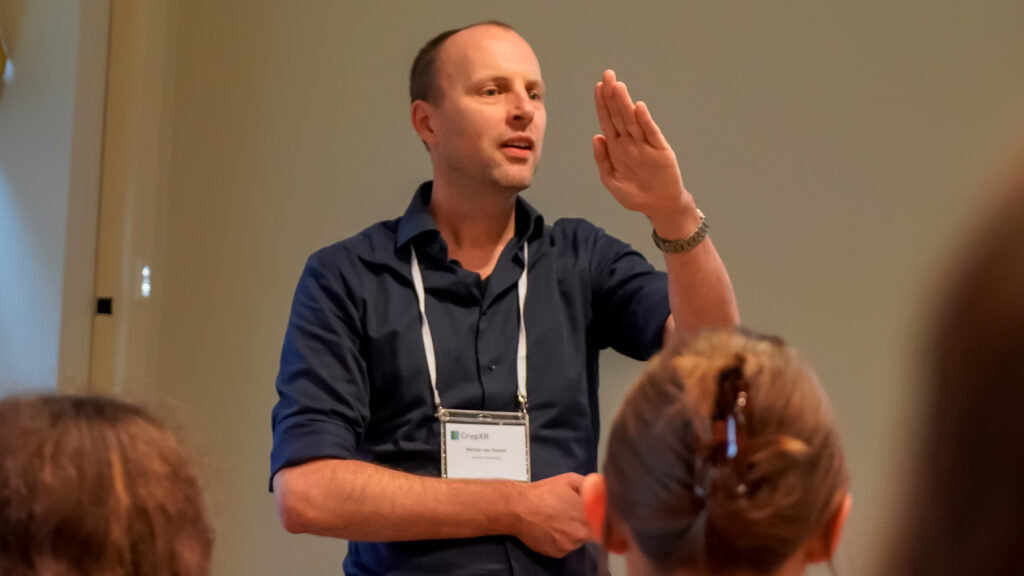
Dancing in the chapel
The CropXR community encompasses a wide variety of professionals with backgrounds in, amongst others, plant science, computer science, social science, breeding and agriculture. To better understand each other’s backgrounds and professional languages, CropXR strives to unite its community in the best possible way.
What is a language that everybody can speak, regardless of his, her or their professional background? The language of dance! In the evening all participants were invited to join the dance floor. In a chapel that bore a resemblance to the music venue Paradiso in Amsterdam, the CropXR community danced the night way. The energy was terrific and the entire evening was memorable!
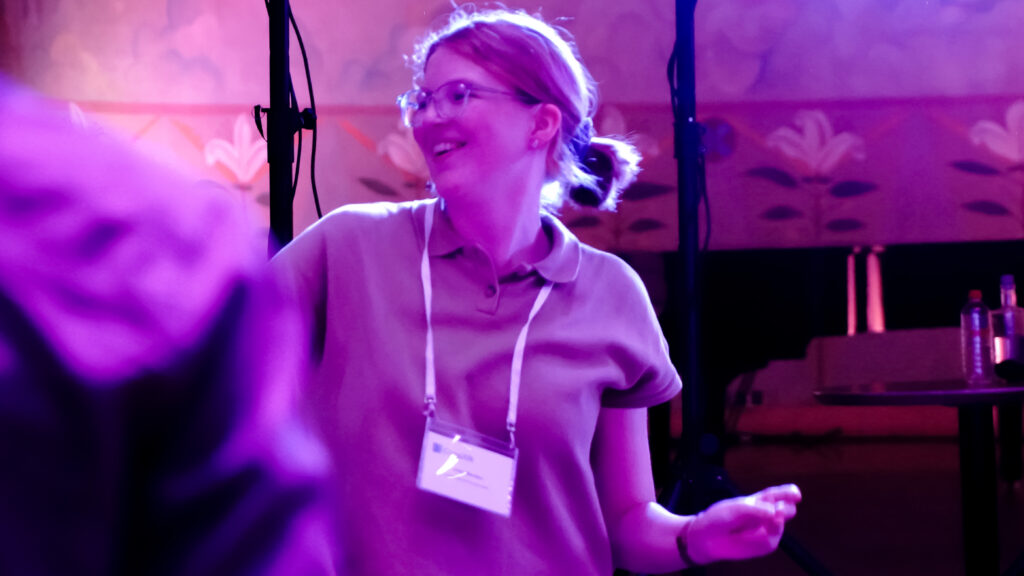
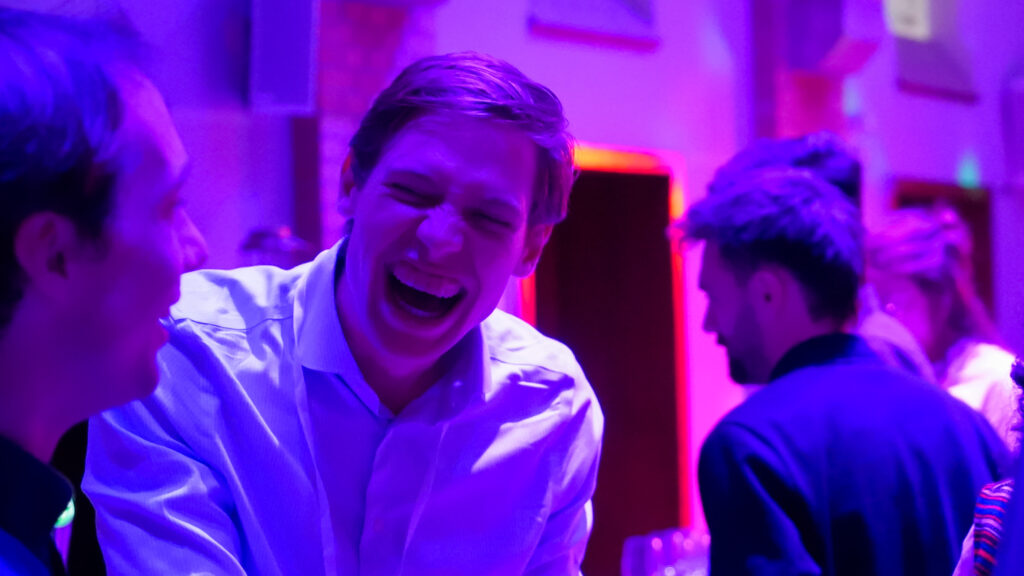
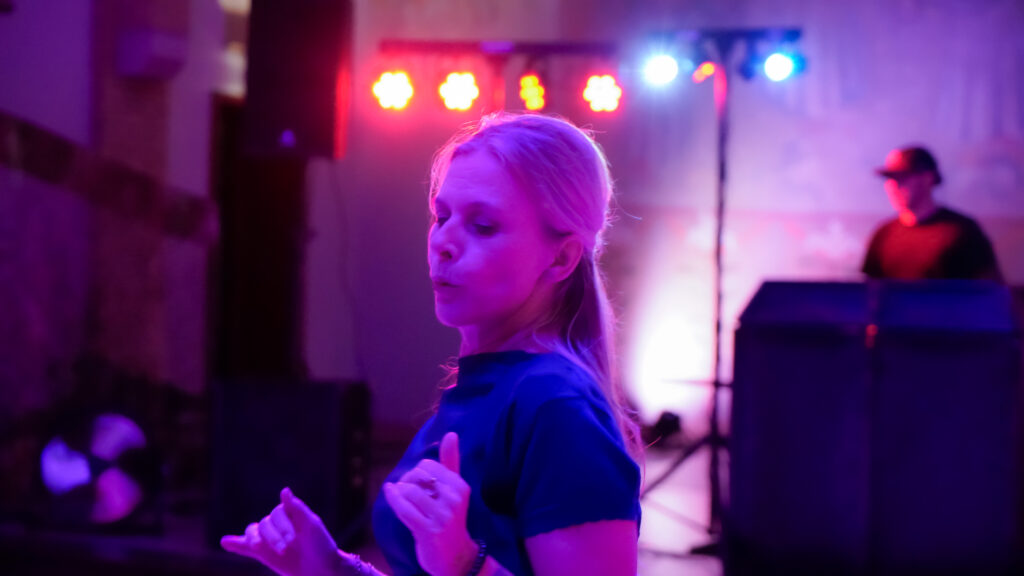
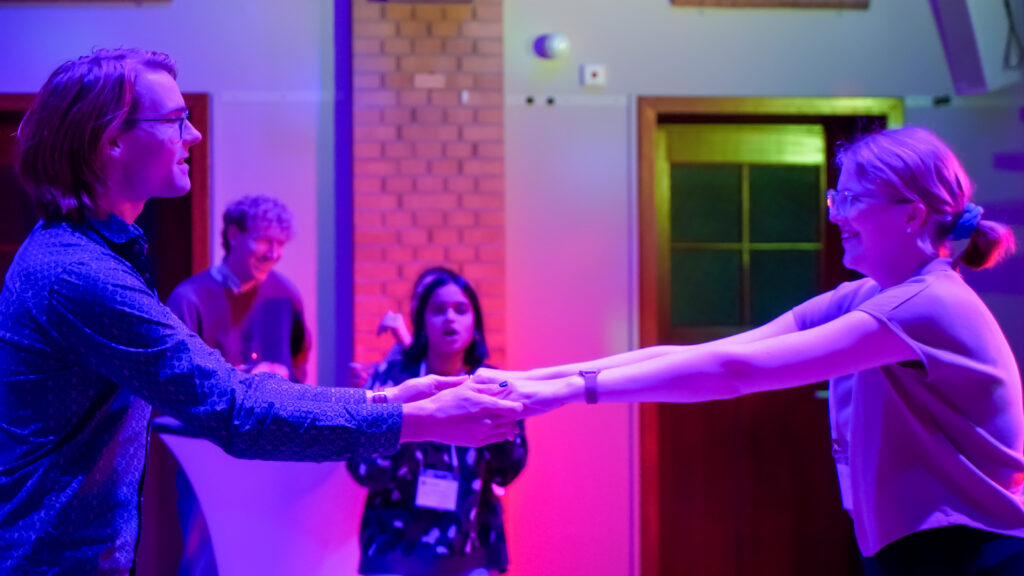

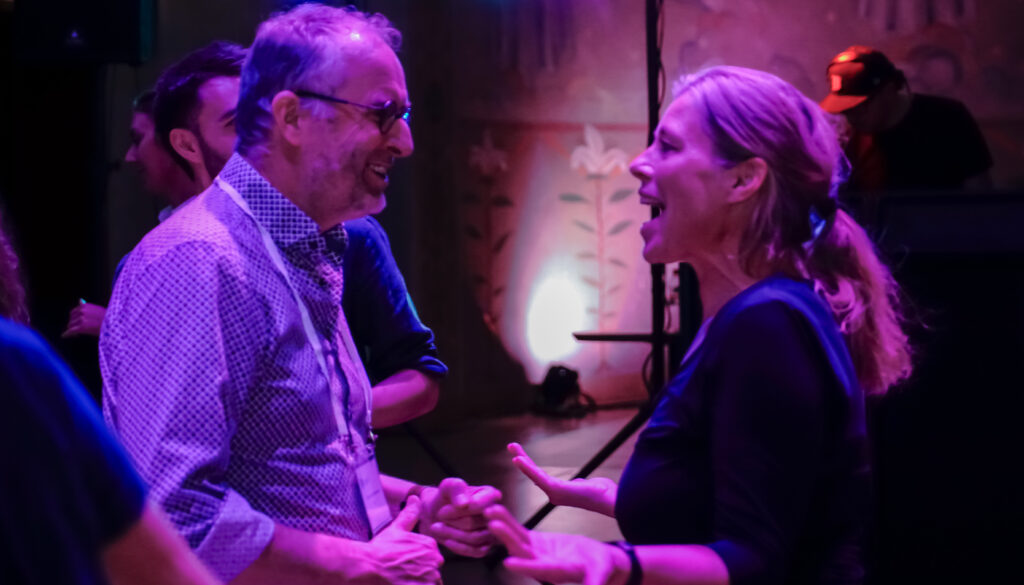
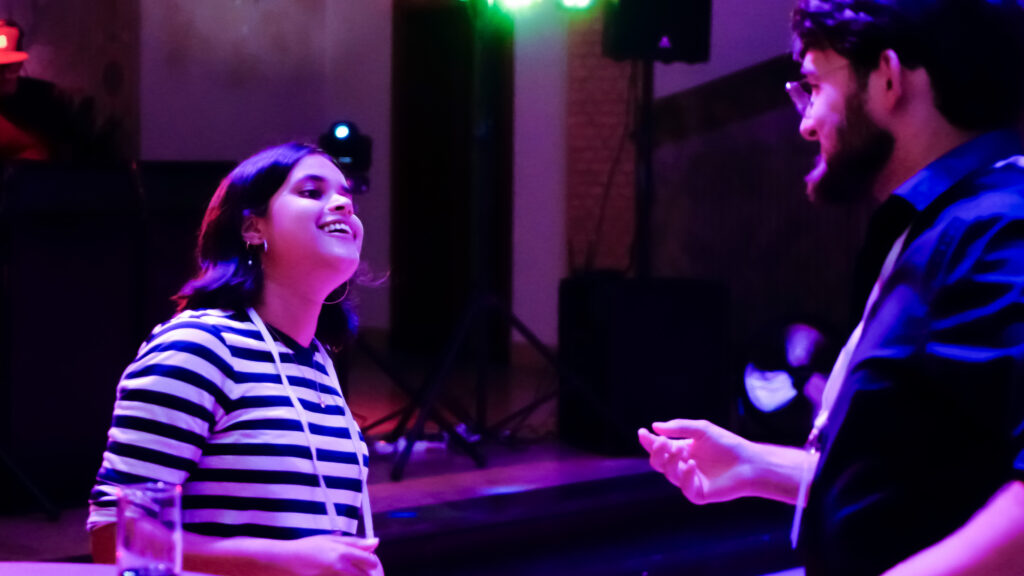
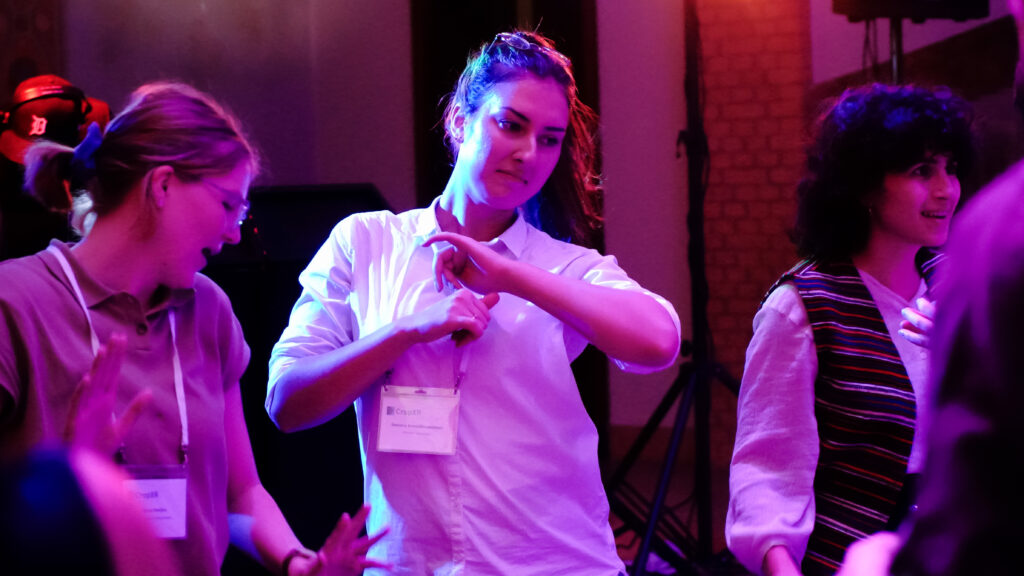
Signs for science
The cheerful workshop ‘Draw your message’ kicked off the second day of the conference. The participants learnt more about visually translating scientific information. Many biologists connected to CropXR will probably often use the word ‘cell’. This word can refer to the smallest unit that can live on its own. It can also refer, however, to a small room or prison. A simple drawing can immediately clarify which one of the word’s meanings is intended. Moreover, it is an appealing way to communicate complex information.

The workshop gave practical tools and immediately generated some results amongst the participants. Petra Bleeker made this nice
drawing of the liaison officers of CropXR.
Then Diana Horvath, President of 2Blades, took to the stage for her keynote speech. Horvath spoke about the important work of 2Blades, an organization that bridges public-private interest with a unique, non-profit business model. In this way, the organization contributes to accelerating agricultural innovation from the lab to the field.
The liaisons officers, Bernard de Geus, Hedwich Teunissen, Henk Huits and Jeroen Rouppe van der Voort, then spoke about their work. Jeroen Rouppe van der Voort is handing over his role as liaison officer to Henk Huits. On behalf of the entire CropXR community, Hedwich Teunissen thanked him for his tremendous contribution to CropXR.
This part of the program was followed by some more presentations. Professor Niels Anten informed the participants on the potato field trials, part of the CropXR Potato satellite or work package S1. Professor Christoph Lofi addressed the audience with humour when he spoke about the important work of the Resilience hub and the data infrastructure of CropXR.
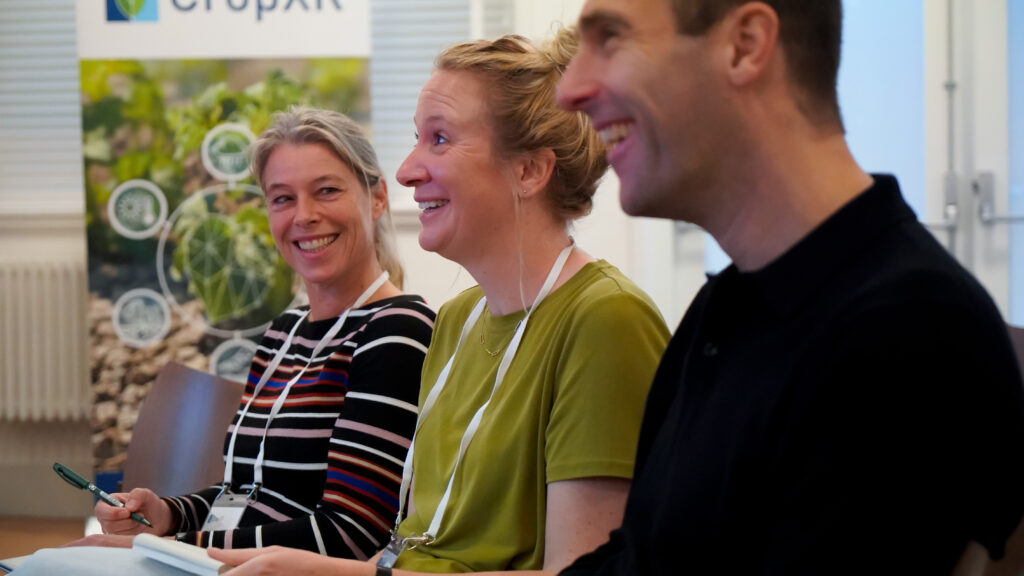
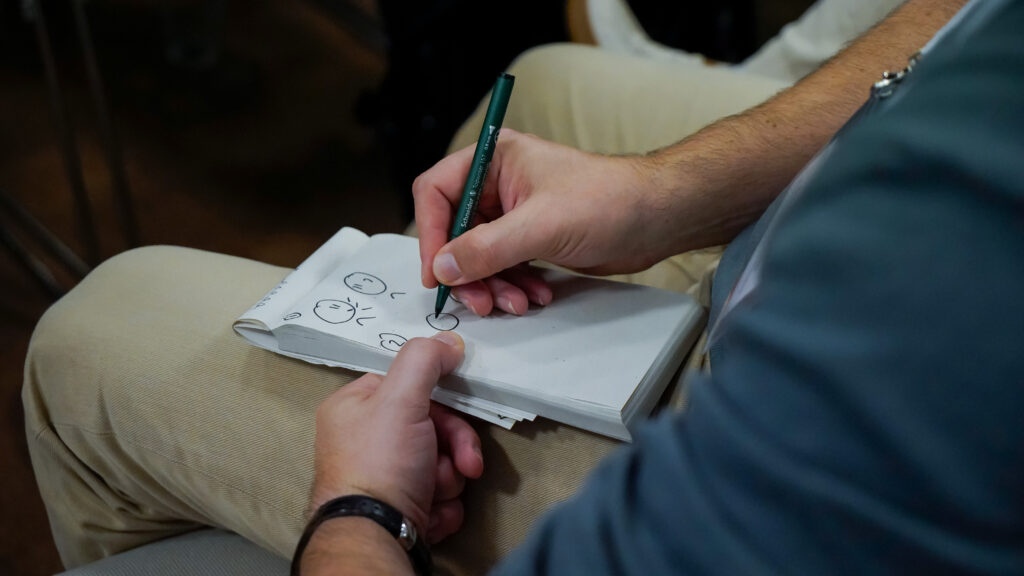
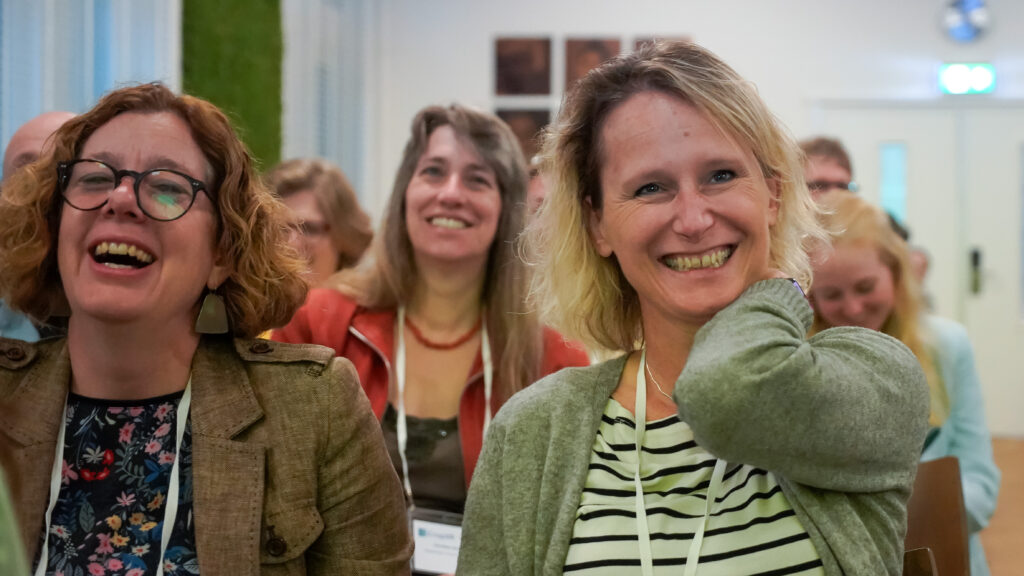

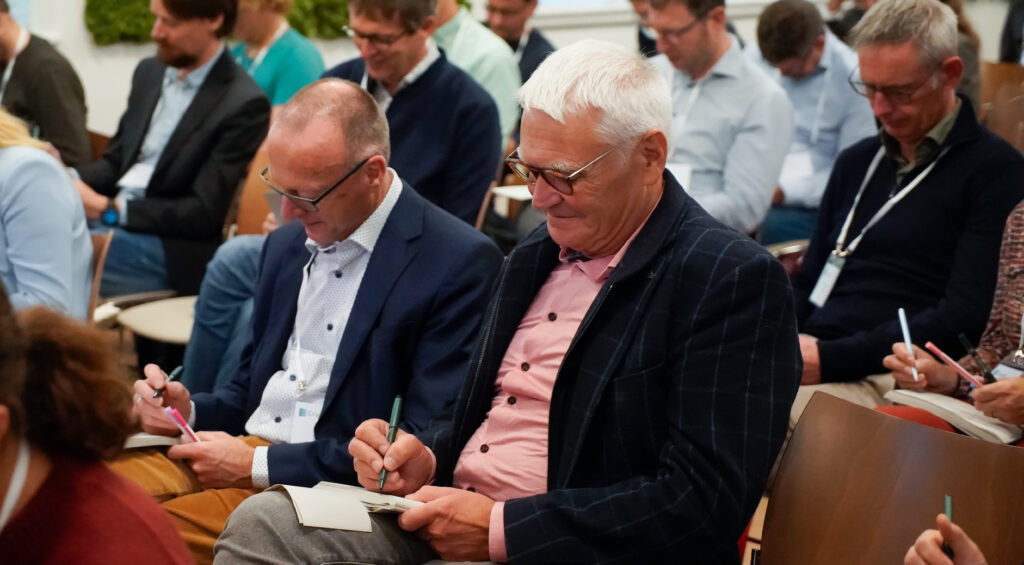
Afternoon program
In the afternoon there were workshops on societal implications, soil, growth under stress and process-based crop models. The workshops resulted in important takeaways.
The final part of the afternoon included some more presentations. Professor Petra Bleeker spoke about how to manage plant disease in a changing climate and the activities of work package C2. Peter Bourke, who is part of AgroXR, talked about breeding for resilient cropping systems. Communications advisor Rachel Visscher informed the community on communication strategies and tools. Professor Guido van den Ackerveken closed the conference, thanking everybody for their energy, commitment and fruitful participation. The conference has been a grand success and we all look forward to the next CropXR event in spring 2025!

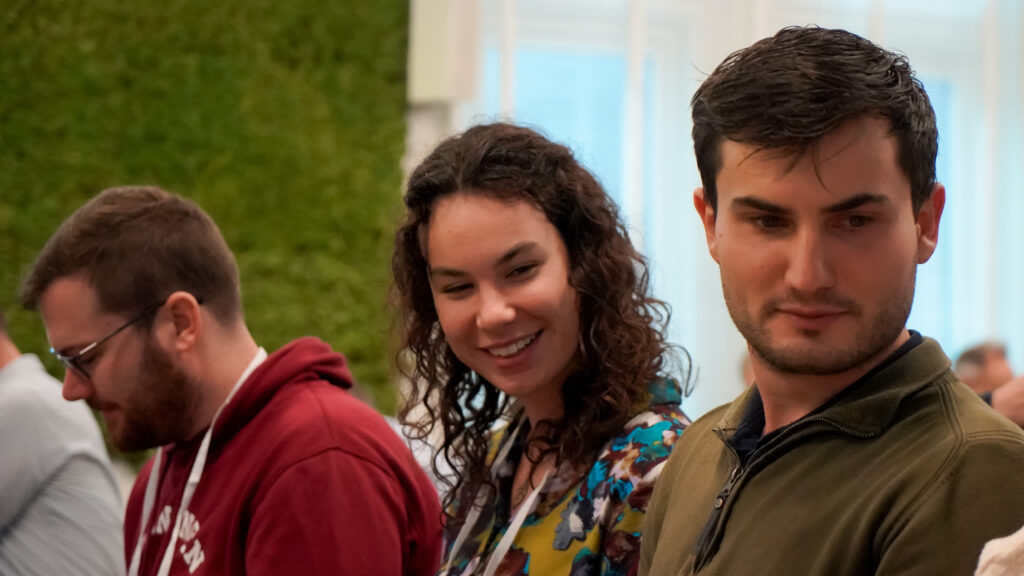


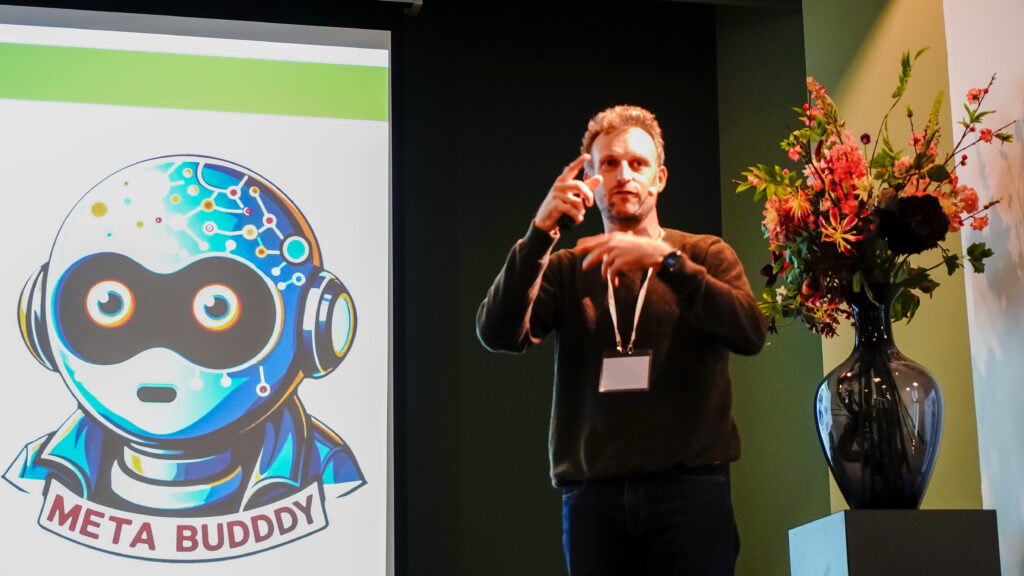
Photos: Rachel Visscher for CropXR

